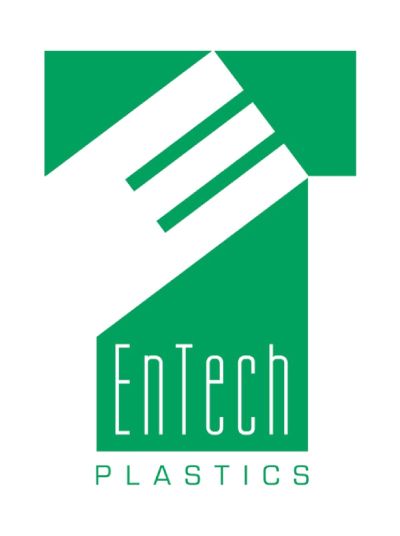Design for Manufacturability: Key Principles in Injection Molding
Designing a product that is both innovative and manufacturable is a delicate balancing act, especially in the realm of injection molding. The process of injecting plastic into molds to create intricate and functional parts is highly efficient, but its success relies heavily on thoughtful initial design.
In this blog, we explore the principles of Design for Manufacturability (DFM) as they apply to injection molding; highlighting key considerations, strategies, and best practices for creating designs that are not only functional but also optimized for efficient and cost-effective production.
The Importance of Design for Manufacturability
Design for Manufacturability (DFM) is a holistic approach to product design that aims to streamline the manufacturing process, reduce production costs, improve product quality, and minimize time-to-market. In injection molding, DFM is particularly crucial because it directly impacts the ease and cost of producing parts.
When implemented effectively, DFM practices ensure that the final design minimizes material waste by optimizing part geometry and reducing unnecessary features. This approach enhances moldability, creating designs that are easier to mold and reducing the risk of defects throughout the production process.
A well-designed part can be manufactured quickly, leading to faster production cycles and shorter lead times, while simultaneously reducing the likelihood of producing defective parts. This saves valuable time and resources that would otherwise be spent on rework or scrap. Additionally, efficient designs require less complex molds and tooling, leading to significant cost savings in tooling setup.
Key Principles of DFM in Injection Molding
Simplicity is Key
In injection molding, complexity often translates to higher costs and increased risk of defects. Simplifying part geometry whenever possible creates a more reliable manufacturing process. Complex designs typically require more elaborate tooling and increase the likelihood of production issues. Similarly, minimizing undercuts and sharp corners simplifies ejection and demolding processes, resulting in smoother production runs and higher-quality parts.
Draft Angles and Wall Thickness
Incorporating draft angles—slight tapers on vertical walls—makes it significantly easier to eject parts from molds and prevents surface defects that can occur during removal. Equally important is maintaining uniform wall thickness throughout the part. Uneven thickness can lead to warping, sink marks, and other quality issues as the material cools unevenly.
Gas Assist injection molding, however, allows designers to strategically "break the rules" of uniform wall thickness. This innovative process injects nitrogen gas into thicker sections of the part, creating hollow channels that eliminate sink marks and warping while maintaining structural integrity.
As demonstrated in EnTech's case study, this technique enables the creation of complex geometries with varying wall thicknesses that would be impossible with conventional molding methods. The result is enhanced design freedom, reduced material usage, faster cycle times, and the ability to produce parts with premium surface finishes even in traditionally challenging thick-walled sections.
Structural Integrity Through Smart Design
Rather than thickening walls to increase strength–which can lead to material waste and molding issues–adding strategic ribs provides structural support while optimizing material usage. For features that require fasteners or attachments, properly designed bosses ensure secure connections without compromising the overall strength of the part.
Gates, Runners, and Flow Dynamics
The placement of gates—entry points for molten plastic—significantly affects material flow and final part quality. Positioning gates in non-visible areas minimizes aesthetic issues while ensuring proper distribution of material. Complementing gate placement, well-designed runners efficiently distribute material throughout the mold, reducing cycle times and ensuring even filling.
Technical Considerations for Optimal Results
Planning for ejector pins requires careful consideration of their placement to avoid interference with part functionality or aesthetics. Strategically positioned ejector pins help ensure clean part removal without damage. Additionally, adequate venting prevents trapped air or gas, reducing the risk of surface defects like burn marks or incomplete filling.
Material Selection and Performance Requirements
Choosing materials with suitable properties impacts every aspect of the injection molding process. The selected material must balance moldability, strength, and cost while meeting application-specific requirements. Considerations such as stiffness, chemical resistance, and color requirements all influence the final performance of the part.
Precision in Tolerances and Assembly
Defining tolerances carefully is essential—they should be both achievable in the manufacturing process and necessary for the function of the part. Overly tight tolerances increase costs without adding value, while insufficient precision can compromise functionality. When designing parts that will be assembled with others, ensure they fit together properly by accounting for material shrinkage and potential variability in the molding process.
Integration and Assembly Efficiency
Modern injection molding techniques like overmolding and insert molding can reduce assembly steps and improve product functionality by integrating multiple components. Additionally, designing parts with ease of assembly in mind ensures that connectors, fasteners, and alignment features contribute to efficient manufacturing and assembly processes rather than complicating them.
From Concept to Creation: The DFM Advantage
Design for Manufacturability is far more than a technical consideration—it's a fundamental approach in injection molding that drives efficiency, reduces costs, and ensures the successful production of high-quality plastic parts. By embracing principles such as simplicity, appropriate draft angles, uniform wall thickness, and thoughtful gate placement, designers and engineers can optimize their designs for ease of molding and consistent quality.
At EnTech Plastics, we specialize in turning design concepts into manufacturing realities. Our team of expert engineers can review your current designs, suggest DFM improvements, and guide you through the injection molding process from start to finish. Contact EnTech Plastics today to schedule a consultation. Let us help you transform your design challenges into manufacturing successes.
Be The First to Know!
Enjoying this article? Stay up to date and sign up now to get notified of new news and insights from EnTech Plastics.
